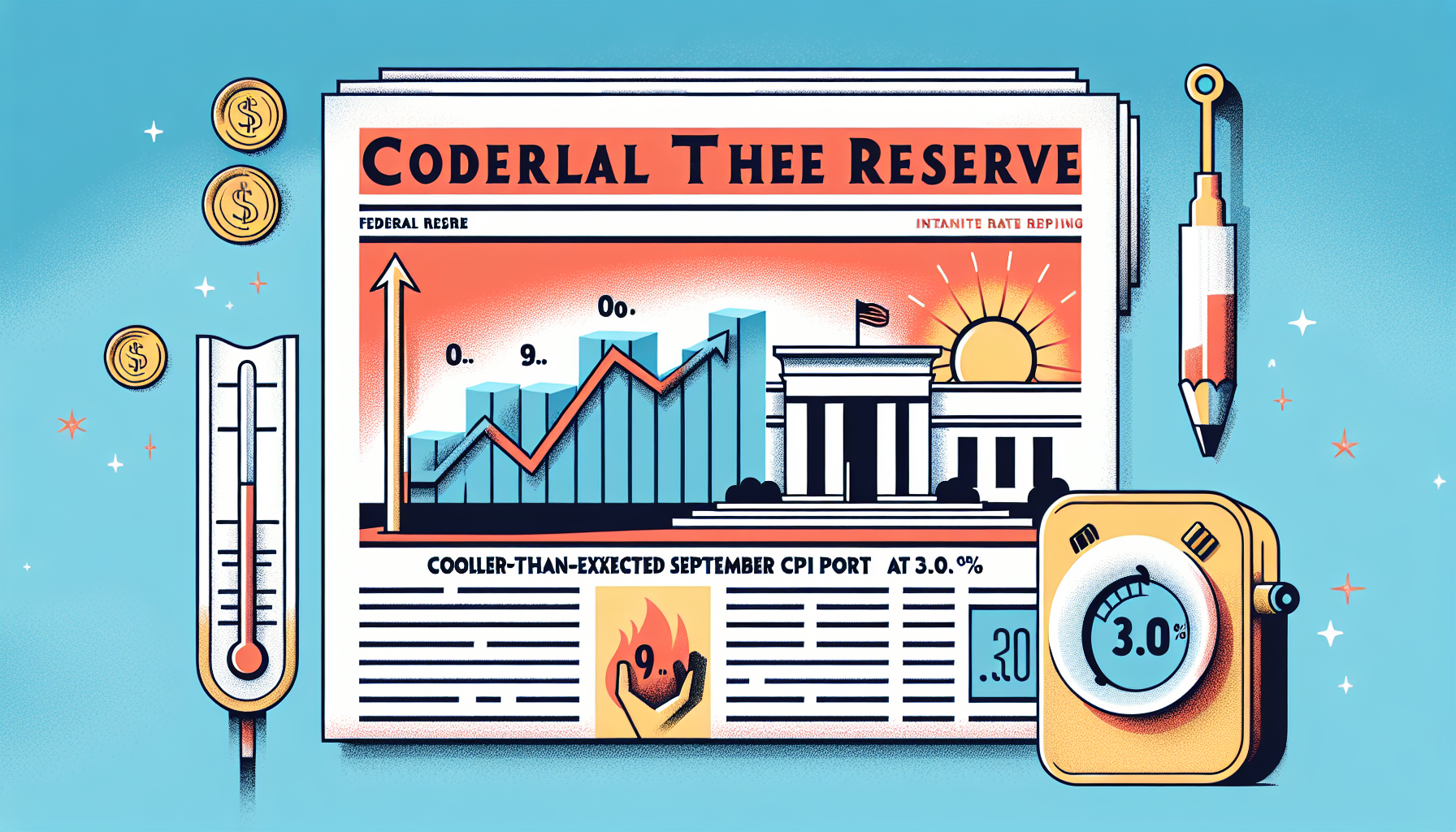A Sigh of Relief: September's Cooler Inflation Data Shifts Market Sentiment
The long-awaited Consumer Price Index (CPI) report for September has finally arrived, delivering a dose of cautious optimism to a market starved for positive economic signals. In a period of governmental silence due to a shutdown, this lone data point broke through, revealing an inflation rate of 3.0% year-over-year, a figure that came in below economist forecasts. This cooler-than-expected print is more than a mere statistical beat; it's a potential turning point that could reshape the Federal Reserve's policy trajectory and offer a reprieve to consumers and investors alike.

Decoding the September CPI Report: A Deeper Dive into the Numbers
The headline figure of 3.0% annual inflation, down from the anticipated 3.1%, was bolstered by an even more encouraging core CPI reading. Stripping out the volatile food and energy sectors, core inflation also registered at 3.0% annually, matching the headline rate and falling below its 3.1% forecast. The monthly increase of 0.2% for core prices marked a slowdown from the 0.3% gains seen in July and August, indicating that underlying inflationary pressures may finally be moderating in a sustained way.
The Gasoline Spike and Shelter's Slowdown
Digging into the components reveals a nuanced story. The most significant upward pressure came from the energy sector, specifically a 4.1% monthly jump in gasoline prices. This serves as a reminder that global oil market volatility remains a persistent threat to stable prices. However, this surge was largely offset by a critical development: a notable deceleration in shelter costs. As the single largest component of the CPI, accounting for about one-third of the index, shelter's modest 0.2% monthly increase is a powerful counterweight. This slowdown suggests that the lagged effect of rising rents and housing costs is finally feeding through to the data, a trend that, if continued, could anchor inflation lower for the foreseeable future.
The Fed's Final Clue Before a Crucial Decision
This CPI release was the last major piece of the economic puzzle the Federal Reserve will receive before its highly anticipated policy meeting next week. For months, the central bank has been navigating a treacherous path, attempting to tame inflation without triggering a severe recession. With its official inflation target set at 2%, the 3.0% reading, while still elevated, shows meaningful progress. The data provides the clearest signal yet that the Fed's aggressive rate-hiking campaign is having its intended effect.
Market Reactions and the Path Forward for Interest Rates
Financial markets responded immediately and positively to the news. Stock market futures extended their gains, while Treasury yields, which move inversely to prices, dipped. This reaction reflects a growing conviction among traders that the Fed will proceed with a quarter-percentage-point rate cut at its upcoming meeting, lowering the benchmark rate from its current 4%-4.25% target range. Furthermore, the probability of a subsequent cut in December has solidified. The report effectively validates the market's dovish expectations, reducing the risk of a hawkish surprise from the Fed.

Beyond the Headlines: Lingering Economic Concerns
Despite the positive data, significant economic crosscurrents remain. The specter of former President Trump's trade tariffs continues to loom, representing a potential catalyst for a renewed inflationary surge. Simultaneously, Federal Reserve officials, including Chair Jerome Powell, have expressed persistent caution. Their primary concern is a dual mandate: ensuring inflation is convincingly on a path back to 2% while monitoring for signs of labor market deterioration. Although layoffs remain low, a noticeable slowdown in hiring has introduced a new layer of complexity to their decision-making process.
The Political and Economic Standoff
The context of this data release is as critical as the numbers themselves. Published solely because it is legally required for Social Security cost-of-living adjustments, this CPI report was an island of information in a sea of government silence. This data blackout has left economists and policymakers flying partially blind, making this single report disproportionately influential. It underscores the fragile state of economic governance and highlights how political impasses can directly impact financial stability and policy clarity.
Conclusion: Market Implications for the Coming Weeks
The September CPI report has fundamentally shifted the landscape for the financial markets in the short term. For the next several weeks, investors can expect a market narrative dominated by "Goldilocks" optimism—the notion that the economy is cooling enough to curb inflation but not so rapidly as to cause a deep recession. This environment is typically favorable for both stocks and bonds. We are likely to see sustained momentum in equity markets, particularly in rate-sensitive sectors like technology and growth stocks, which benefit from lower borrowing costs. Bond yields may continue their recent retreat, providing relief to areas of the economy like housing that have been crippled by high interest rates.
However, this optimism will be tempered by a keen focus on the Federal Reserve's communication. Every word from Chair Powell in the upcoming press conference will be scrutinized for hints about the pace of future rate cuts beyond December. The market's newfound confidence will be tested by subsequent labor market data and any unforeseen geopolitical events that could disrupt energy prices. In essence, the September CPI has given the market and the Fed the green light for a policy pivot, but the journey ahead remains one of cautious navigation, with investors closely watching for any signs that the path to a 2% inflation target is either accelerating or hitting unexpected roadblocks.

